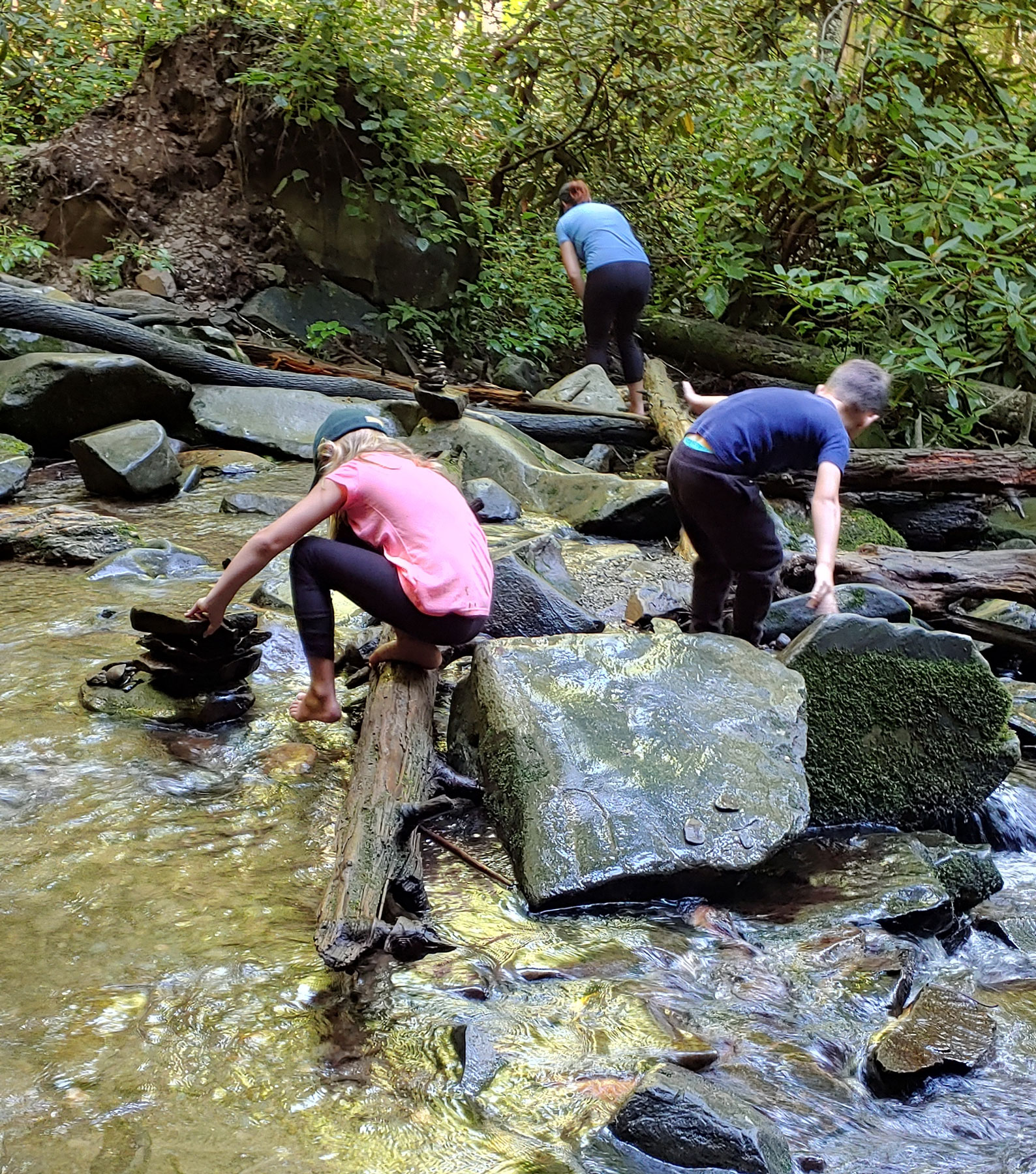
The more you know, the more you care, the better you can do. It’s a naïve thought, but it’s what I choose to believe, especially in my capacity as Great Smoky Mountains Association’s 2022 Steve Kemp Writer in Residence.
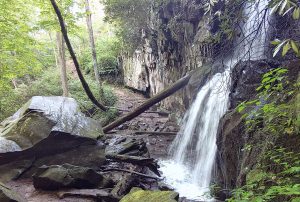
I shared this thought with an Illinois family I met on a late summer hike to Baskins Creek Falls in Great Smoky Mountains National Park. We initially spoke when I let them know I was going to pass them on the challenging hillside.
The young son looked at me curiously and asked why I was using poles. I explained how they helped me keep my balance on rutted and rocky trails like this, especially, I laughed, as I was ever so much older and more injury-prone than he.
I could tell my response made no sense to him. Fate, however, intervened, and he slipped, sliding less than gracefully on his tush. (Nothing like a little real-world experience to create clarity.) We laughed for a moment as his father said, “Now do you see what she meant?” I walked away, chuckling under my breath.
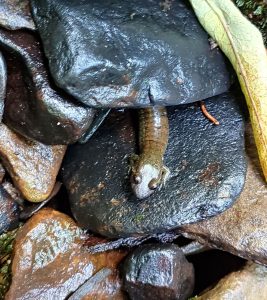
We met again at the falls as I was quietly bemoaning the rock cairns that had been erected on several creek boulders. Thanks to conversations with park rangers and scientists during my residency in the Smokies, I had become fully aware that the movement of stones can not only destroy the tiny ecosystems of aquatic creatures like salamanders and caddis flies, but they can also alter the water’s flow and lead to erosion.
Since this was the family’s first visit to a waterfall, I offered to take a group shot of them in front of the falls to spare them a more limited “selfie” view. As they were moving into position, I asked the young boy and his sister a favor.
Pointing to the cairns, I made the request of them not to copy what they saw. I then asked if I could explain why. Somehow asking permission versus telling them felt important.
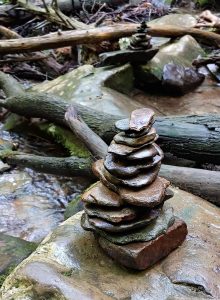
A sense of relief whooshed through me as both the mom and the kids appeared eager to learn. I do believe I had them at “salamander.”
Xavier, the little boy, looked at me with wide-eyed, tiny-tot innocence as he asked what a salamander was. After my initial shock wore off — somehow, I thought all little boys simply knew about salamanders by virtue of being little boys — I showed him a picture I had taken the day before. He was, of course, as astounded as he was delighted.
I went on to share what I had learned — that the presence of salamanders, because they are sensitive to change, shows that an environment is relatively healthy. I added the fact that the Smokies are known as the salamander capital of the world and are home to some 30 species of them. Having read about this trail in “Waterfalls of the Smokies,” a pocket guide published by GSMA, I told him we were likely to see them here.
As I was talking, Xavier’s older sister asked if she might help take the cairns down. I happily accepted the offer. Between the children, their mom, and me, we were able to respectfully return the rocks to the water within a few minutes.
Nature was clearly grateful. No sooner had we finished our simple task than Xavier excitedly announced that he’d found a salamander! Sure enough, there, with its tail nestled beneath a rock and its head poking out into the creek, was Xavier’s first salamander.
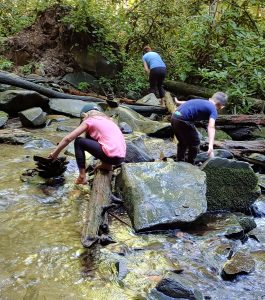
Thanks to the salamander program I had participated in during the annual Spring Wildflower Pilgrimage in the Tennessee section of the park, I was able to pass along my understanding of how to cautiously lift one side of a rock to check for salamanders as well as gently place it back down to minimize any habitat disturbance. I also had brought, per the Pilgrimage leader’s direction, a handy dandy plastic sandwich bag in my backpack to safely catch one for a quick view. (A plastic bag containing water is a scientist-sanctioned way to observe these creatures up close without drying out their skin.)
For the next 20 or so minutes, we kept our eyes peeled for salamanders. Although we spied a number of them, each of which brought squeals of delight from Xavier, we were never able to “land” one in the bag. Xavier didn’t care; the search and discovery was more than enough fun for him.
When it was time for me to go, I asked if they wanted my plastic bag should they find others. They did, and understood the bag was only to be used to take a closer look before returning the salamander to the same place they found it. The parents thanked me for the impromptu lesson, while Xavier, who told me he would miss me, asked if he could visit me next time. His words felt like a warm hug.
Although I was ever so slightly bummed to be moving on, I left hopeful, fairly certain that they, like me, would, somewhere down the line, make the leap from student to teacher, from unknowing wanderer to mindful steward. That thought alone lightened my step as I made my way back to the trailhead.
Subscribe to get the latest posts sent to your email.
The Great Smokies Welcome Center is located on U.S. 321 in Townsend, TN, 2 miles from the west entrance to Great Smoky Mountains National Park. Visitors can get information about things to see and do in and around the national park and shop from a wide selection of books, gifts, and other Smokies merchandise. Daily, weekly, and annual parking tags for the national park are also available.